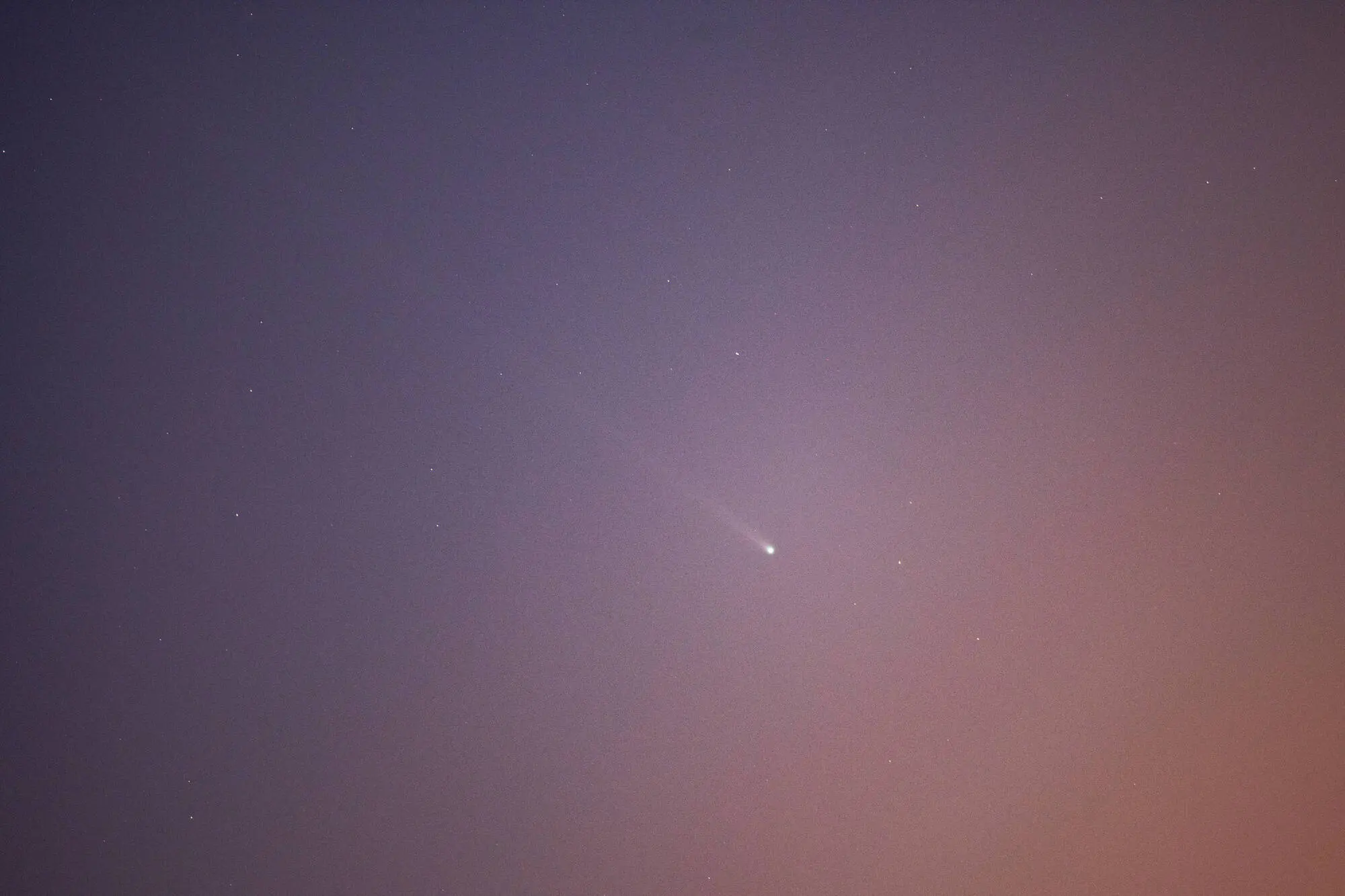Probes race to study mysterious 3I/Atlas, a Manhattan-sized space object passing through our solar system
-
 Comet C/2023 P1 (Nishimura) is seen in L'Aquila, Italy, on september 10th, 2023. Discovered in August by a Japanese amateur astronomer, comet Nishimura (C/2023 P1) will reach the point of maximum approach to Earth on September 13 and will acquire its maximum brightness on September 17. It will probably be visible to the naked eye, as well as with telescopes and cameras. (Photo by Lorenzo Di Cola/NurPhoto via Getty Images)
Comet C/2023 P1 (Nishimura) is seen in L'Aquila, Italy, on september 10th, 2023. Discovered in August by a Japanese amateur astronomer, comet Nishimura (C/2023 P1) will reach the point of maximum approach to Earth on September 13 and will acquire its maximum brightness on September 17. It will probably be visible to the naked eye, as well as with telescopes and cameras. (Photo by Lorenzo Di Cola/NurPhoto via Getty Images)Scientists are in a hurry to study a huge space object named 3I/Atlas, which is currently moving through our solar system. The object is said to be about the size of Manhattan and is traveling extremely fast. Researchers believe it could be an interstellar object — meaning it may have come from outside our solar system.
If that’s true, 3I/Atlas would be only the third known visitor from another star system, after ‘Oumuamua in 2017 and Comet Borisov in 2019. These objects are very rare and move quickly, which is why scientists are trying to gather as much information as they can before they disappear again into deep space.
What exactly is 3I/Atlas
3I/Atlas was found by astronomers with the Asteroid Terrestrial-impact Last Alert System (ATLAS) in Hawaii. Based on data gathered to date, it appears to be a big icy-rocky body, likely extending several miles across. Due to its dimensions, scientists have likened it to Manhattan Island.
Scientists still have no idea what type of object it is. It may be an asteroid, consisting primarily of rock and metal, or a comet, which has more ice and dust. What scientists do know is that 3I/Atlas is traveling more quickly than most bodies in our solar system — quickly enough to imply that it did not form here.
That makes it unique. It could have material created around another star — remnants from a totally different solar system. An analysis of it might be able to teach scientists more about the way other planets and stars developed eons ago.
Why scientists are rushing
Right now, teams from NASA and other space agencies are checking if any existing spacecraft or probes can be redirected to observe 3I/Atlas up close.
Because it’s moving so quickly, they don’t have much time. Once it travels beyond a certain distance, it will become too faint and too far away to study properly. Even with strong telescopes, it’s hard to track something moving that fast through deep space.
If scientists can capture even a few close-up images or readings, it would be a big win. It could show what the object is made of, how it moves, and whether it has a tail, like a comet. If it doesn’t, then it might be more like an asteroid or even a broken piece of another planet.
Learning from past discoveries
This isn’t the first time an interstellar object has visited. Back in 2017, astronomers spotted ‘Oumuamua, which passed by our solar system at high speed. Its unusual shape and behavior led to many theories — from it being a natural rock to something artificial. By the time telescopes focused on it, it was already too far to study closely.
In 2019, another visitor — Comet Borisov — passed through, and scientists managed to study it a bit more. It confirmed that interstellar comets can carry dust and ice similar to the ones found in our own solar system.
This time, scientists hope to act faster. They don’t want to miss another rare chance to observe an object from beyond our Sun.
Why 3I/Atlas is important
Studying 3I/Atlas could help scientists learn how solar systems form, what materials exist in other parts of the galaxy, and whether the building blocks of life — like carbon and water — are common in space.
Even if no probe reaches it in time, ground-based telescopes around the world are now tracking the object closely. Every bit of data helps scientists understand where it came from and how many of these interstellar visitors might pass through in the future.
3I/Atlas is already moving away, and soon it will vanish into the dark. Scientists are racing against time to catch it before it’s gone for good.
TOPICS: NASA
- NASA’s Webb telescope detects the earliest known supernova from 730 million years after the Big Bang
- NASA completes assembly of the Nancy Grace Roman Space Telescope
- Supermassive black hole unleashes ultra-fast winds moving at 20% the speed of light
- NASA missions identify unusual Gamma Ray burst with record duration